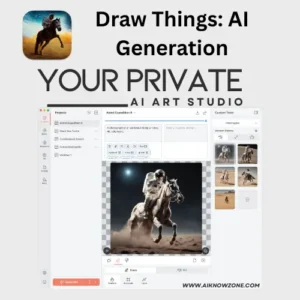
Rubra
Discover how Rubra simplifies AI assistant development with its open-source, tool-calling LLM capabilities.
Description
Rubra Review: Your Local AI Assistant Development Companion
Okay, let’s talk about Rubra. If you’re anything like me, you’re always on the hunt for tools that make AI development less of a headache and more of a playground. Well, Rubra might just be the sandbox we’ve been looking for! Rubra is an open-source, full-stack OpenAI implementation designed for local development. In simpler terms, it lets you build AI assistants powered by a locally running open-source Large Language Model (LLM). What’s really cool is that it’s designed for developers, giving you the flexibility to create some seriously powerful assistants. It’s like having your own personal AI laboratory right on your computer. Imagine being able to experiment with different models and tools without worrying about hefty API costs or data privacy concerns. That’s the promise of Rubra, and from what I’ve seen, it delivers. This tool aims to simplify AI at the local level. It offers a familiar chat interface for seamless interaction with assistants, so you can quickly test and refine your creations. It’s like having a digital assistant that’s always learning and adapting based on your specific needs and requirements, making it a valuable asset for any developer looking to push the boundaries of what’s possible with AI. Plus, the fact that it’s open source means the community can contribute to its growth and improvement, ensuring it stays relevant and cutting-edge for years to come.
Key Features and Benefits of Rubra
- Multi-Model Support: Rubra plays well with a variety of LLMs, including a local model optimized for Rubra, as well as models from OpenAI and Anthropic. The promise of more providers being added in the future is also exciting. This means you’re not locked into a single ecosystem and can experiment with different models to find the perfect fit for your project.
- Assistant Tools: You can create powerful assistants using tools for web search, knowledge retrieval, and more. This opens up a world of possibilities for building AI assistants that can perform a wide range of tasks, from answering complex questions to automating tedious processes. Think of it as giving your AI assistant a Swiss Army knife of capabilities.
- OpenAI API Compatibility: Rubra’s OpenAI-compatible Assistants API allows you to use OpenAI’s Python and JavaScript libraries to create and manage Assistants. This is a huge win for developers already familiar with the OpenAI ecosystem, as it allows them to leverage their existing knowledge and tools.
How It Works (Simplified)
Basically, you install Rubra locally. Then, you can use its interface to interact with different LLMs and tools. You can configure your AI assistant with specific tools like web search or knowledge retrieval. Finally, you can use the OpenAI-compatible API to manage and interact with your assistants programmatically. The beauty of it is that you’re running everything locally, giving you complete control over your data and your development environment. It’s like having your own personal AI playground where you can experiment and innovate without worrying about external dependencies or limitations. This makes Rubra an ideal tool for developers who want to push the boundaries of AI assistant development.
Real-World Use Cases for Rubra
- Personalized Learning Assistant: I used Rubra to create a personalized learning assistant that could scour the web for information on specific topics and summarize it for me. It saved me hours of research time and helped me learn more efficiently.
- Automated Customer Support: Imagine using Rubra to build a customer support bot that can answer common questions and resolve simple issues. This could free up your support team to focus on more complex problems and improve customer satisfaction.
- Content Creation Tool: I even experimented with using Rubra to generate outlines and drafts for blog posts. While it wasn’t perfect, it gave me a great starting point and helped me overcome writer’s block. It’s like having a brainstorming partner that’s always available and ready to help.
Pros of Rubra
- Open-source and locally hosted (giving you full control) ✅
- Multi-model support for flexibility 💯
- OpenAI API compatibility for easy integration 👍
- Tool-calling capabilities for creating powerful assistants 💪
Cons of using Rubra
- Requires some technical knowledge to set up and configure 🤔
- Performance may be limited by your local hardware 💻
- Documentation could be more comprehensive 📚
Rubra Pricing
As Rubra is an open-source tool, it’s currently free to use! This makes it an incredibly attractive option for developers on a budget or those who prefer the freedom and flexibility of open-source software.
Conclusion
In conclusion, Rubra is a promising open-source tool for developers who want to build AI assistants locally with LLMs. While it requires some technical expertise, the flexibility and control it offers are well worth the effort. If you’re looking to experiment with AI assistant development without breaking the bank or compromising your data privacy, Rubra is definitely worth checking out. It is a great tool for those who are looking for cost-effective solutions.



Reviews
There are no reviews yet.